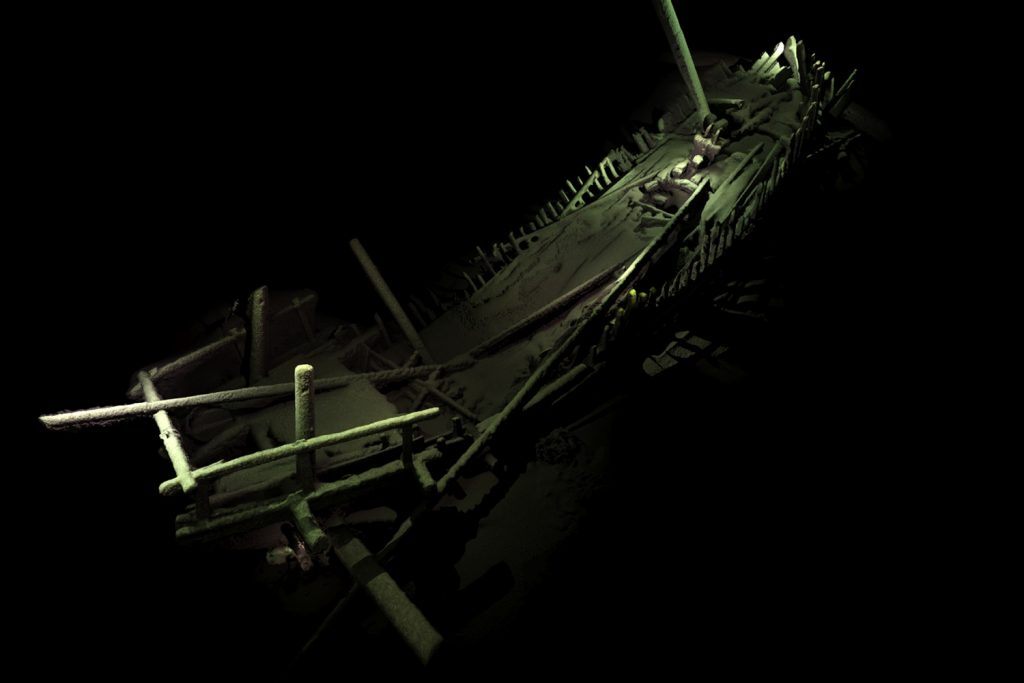Found: An Incredibly Well-Preserved Medieval Shipwreck, Among Many More
The Black Sea wreck is the first of its kind ever discovered.

For centuries, the Black Sea, the wide basin that connects Eastern Europe to Asia, was traveled by ships laden with goods. Not all of those ships made it to their destinations, and a team of scientists studying the bottom of the sea—the Black Sea Maritime Archaeology Project (MAP)—has discovered a collection of beautifully preserved shipwrecks that date back to the 9th century.
The Black Sea MAP project wasn’t explicitly searching for shipwrecks, but rather scanning the seafloor to understand the region’s natural history. But they knew they would find wrecks along the way. The Black Sea’s waters have relatively little salt and low oxygen concentration, which means that the creatures that break down the wood of shipwrecks elsewhere don’t thrive here. When a wooden ship sinks to the bottom of the sea, it can stay in decent condition, even after centuries.

Of the 43 shipwrecks the team identified, one of the most stunning is a medieval ship dating to the 13th or 14th century. Historians know that ships of this style existed from written sources, including manuscripts from Venice, but no example had ever been found. This one is so well preserved that the masts are still standing.
“This is the type of ship that created the trading empires of Venice and Genoa; the type of ship used by the Crusaders,” the University of Connecticut’s Kroum Batchvarov, a codirector of the project, said in a press release.
The project’s primary goal is to study the layers of sand and rock at the bottom of the sea to better understand the region’s history of flooding. At one point in history, the waters of the Black Sea had receded enough for people to settle in what had been marshy land—only to have their homes floods as climate has shifted. How fast did that happen? It would have been a slower-moving disaster than a sinking ship, but still the sort of event that upended lives before people had a chance to adapt.













Follow us on Twitter to get the latest on the world's hidden wonders.
Like us on Facebook to get the latest on the world's hidden wonders.
Follow us on Twitter Like us on Facebook